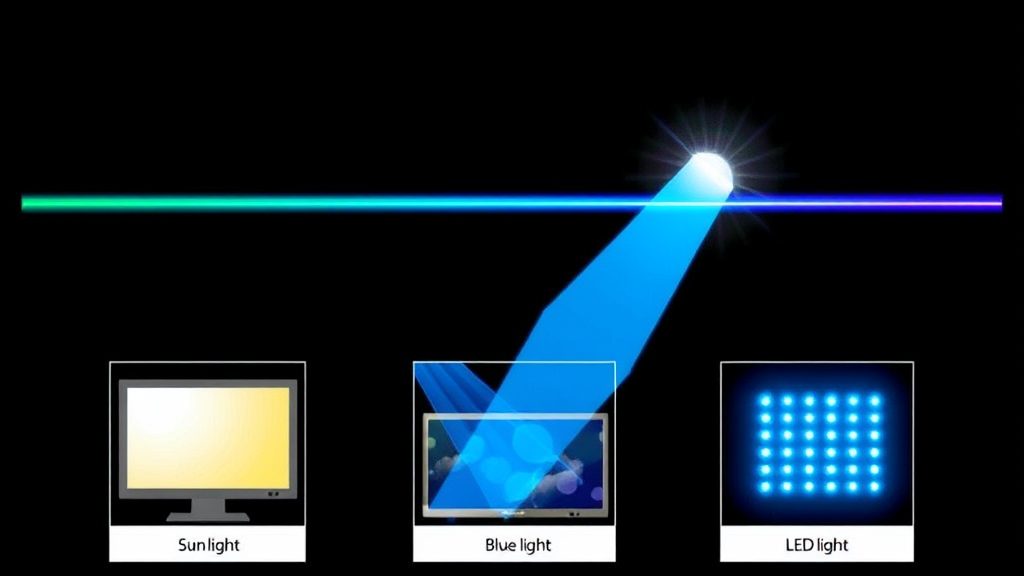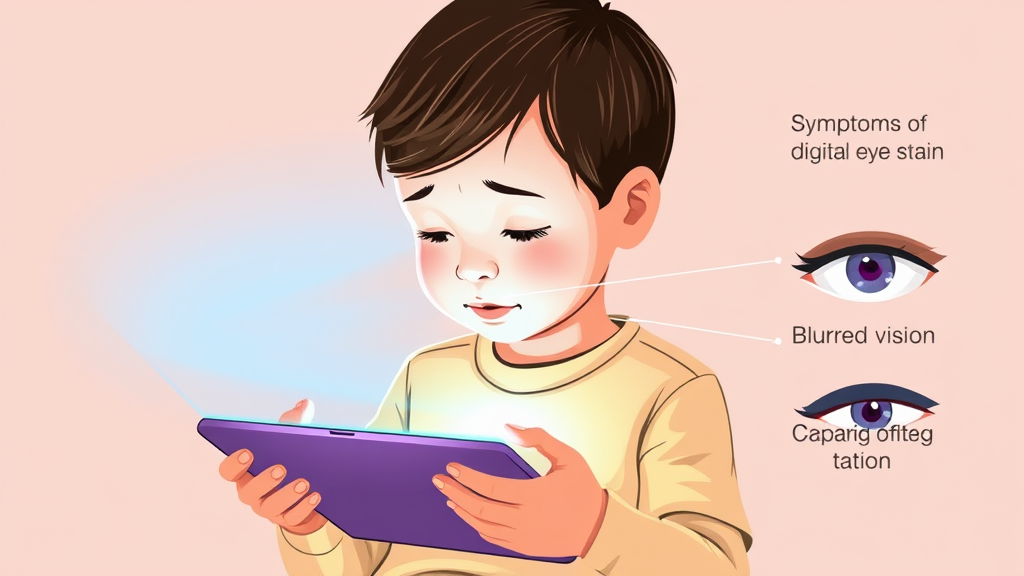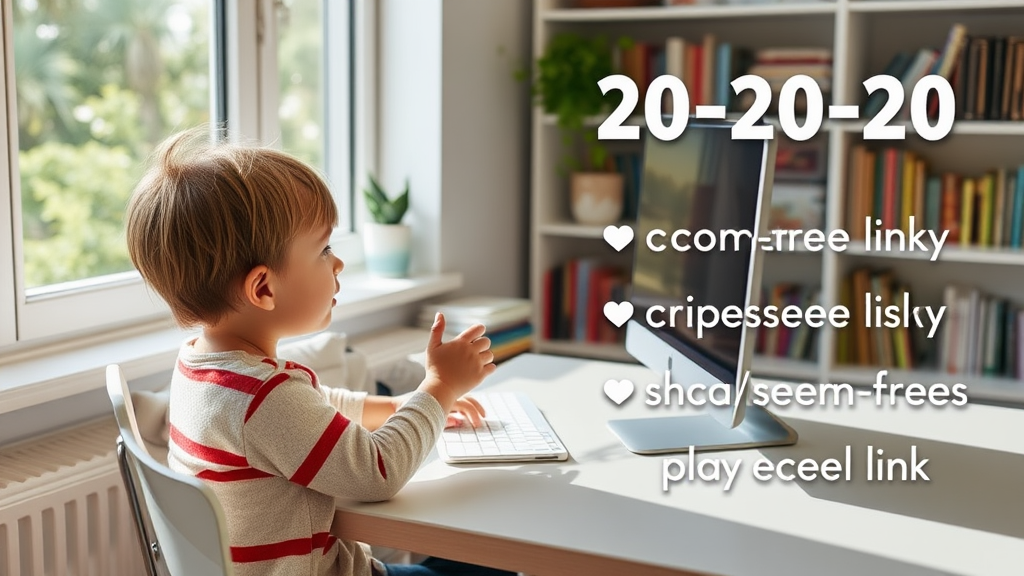In today's digital age, children are spending increasing amounts of time in front of screens, leading many parents to consider blue light glasses as a protective measure. These glasses are designed to filter out blue light emitted by digital devices, which is believed to contribute to digital eye strain and sleep disturbances. This blog post explores the necessity and effectiveness of blue light glasses for children, examining potential benefits, risks, and alternative strategies to safeguard young eyes.
Key Findings
-
Digital Eye Strain: Prolonged screen time can lead to symptoms such as dry eyes, headaches, and blurred vision in children. (allaboutvision.com)
-
Sleep Disruption: Exposure to blue light, especially before bedtime, may interfere with melatonin production, affecting sleep quality. (aetna.com)
-
Limited Evidence on Blue Light Glasses: Current research does not conclusively support the effectiveness of blue light glasses in reducing digital eye strain or preventing sleep disturbances. (healthline.com)
-
Alternative Measures: Implementing the 20-20-20 rule, limiting screen time before bed, and ensuring proper screen ergonomics are recommended strategies to mitigate potential issues. (popsugar.com)
Understanding Blue Light and Its Sources
Blue light is a segment of the visible light spectrum, encompassing wavelengths between approximately 380 and 500 nanometers. It is characterized by its short wavelength and high energy, placing it near the ultraviolet (UV) end of the spectrum.
Natural Sources of Blue Light
The primary natural source of blue light is sunlight. Exposure to sunlight during the day plays a crucial role in regulating the body's circadian rhythm, influencing sleep-wake cycles and overall alertness.
Artificial Sources of Blue Light
In addition to natural sources, blue light is emitted by various artificial sources, including:
-
Digital Screens: Devices such as smartphones, tablets, computer monitors, and televisions emit blue light. Prolonged use of these devices, especially before bedtime, can disrupt sleep patterns by interfering with melatonin production.
-
LED and Fluorescent Lighting: Modern lighting solutions, including LED and compact fluorescent lights (CFLs), emit blue light. While energy-efficient, these light sources can contribute to increased blue light exposure, particularly in indoor environments.
Understanding the various sources of blue light is essential, especially considering the increasing prevalence of digital devices and artificial lighting in daily life. Being aware of these sources can help in managing exposure and mitigating potential adverse effects associated with excessive blue light.
External Sources: Learn More
How Does Blue Light Exposure Affect Children's Eyes?
Blue light is a high-energy visible (HEV) light with short wavelengths, naturally present in sunlight and emitted by digital devices such as smartphones, tablets, computers, and televisions. Children's eyes are more susceptible to blue light exposure because their lenses are clearer, allowing more blue light to reach the retina.
Effects of Blue Light Exposure on Children's Eyes:
-
Digital Eye Strain: Prolonged screen time can lead to digital eye strain, characterized by symptoms such as eye discomfort, fatigue, blurred vision, difficulty focusing, and headaches.
-
Sleep Disruption: Exposure to blue light, especially in the evening, can interfere with melatonin production, the hormone responsible for sleep, leading to poor sleep quality and duration.
-
Potential Long-Term Effects: Ongoing research suggests that excessive blue light exposure may contribute to retinal damage and increase the risk of developing age-related macular degeneration (AMD) later in life.
Recommendations to Mitigate Blue Light Exposure:
-
Limit Screen Time: Encourage balanced screen time by limiting the duration and frequency of device use.
-
Encourage Regular Breaks: Implement the 20-20-20 rule: every 20 minutes, have your child take a 20-second break to look at something 20 feet away.
-
Use Blue Light Filters: Activate blue light filters or "night mode" settings on devices to decrease blue light emission.
-
Promote Outdoor Activities: Spending time outdoors provides a break from screens and natural light exposure, which benefits overall eye health.
-
Regular Eye Exams: Schedule regular eye exams to monitor your child's vision and eye health.
By understanding the effects of blue light exposure and implementing these strategies, parents can help protect their children's eyes and promote overall well-being.
External Sources: Learn More
Evaluating the Effectiveness of Blue Light Glasses for Kids
Blue light glasses are designed to filter out blue light emitted by digital screens, aiming to reduce eye strain and improve sleep quality. For children, the effectiveness of these glasses is a topic of ongoing discussion.
Current research indicates that blue light from screens does not cause physical damage to children's eyes. However, excessive screen time can lead to digital eye strain, characterized by symptoms such as eye fatigue, dryness, and headaches. These issues are more closely related to prolonged screen use rather than blue light exposure itself.
Regarding sleep, blue light can suppress melatonin production, potentially disrupting sleep patterns. Wearing blue light glasses in the evening may help mitigate this effect, promoting better sleep quality.
In summary, while blue light glasses may assist in improving sleep quality for children, their effectiveness in reducing eye strain is less substantiated. Implementing healthy screen habits, such as taking regular breaks and limiting screen time before bed, remains crucial.
External Sources: Learn More
Alternative Strategies to Protect Children's Eyes from Screen Exposure
Protecting children's eyes from prolonged screen exposure involves several effective strategies beyond the use of blue light glasses. Implementing these methods can help reduce digital eye strain and promote overall eye health.
Monitor and Limit Screen Time: Establish daily screen time limits to ensure children engage in a variety of activities, including outdoor play and reading physical books. The American Academy of Pediatrics recommends creating a family media plan to balance screen use with other activities.
Encourage Regular Breaks: Teach children the 20-20-20 rule: every 20 minutes, look at something 20 feet away for at least 20 seconds. This practice helps relax the eye muscles and reduce strain.
Optimize Screen Ergonomics: Ensure screens are positioned slightly below eye level and at an appropriate distance to minimize strain. Adjusting font sizes and screen brightness to comfortable levels can also help.
Maintain Proper Lighting: Use adequate backlighting in the room to reduce glare on screens. Avoid using screens in dark or overly bright environments to prevent eye discomfort.
Encourage Blinking and Eye Moisture: Remind children to blink regularly to keep their eyes moist. Reduced blinking during screen use can lead to dry eyes. Using artificial tears or a room humidifier can also help maintain eye moisture.
Promote Outdoor Activities: Encourage children to spend time outdoors daily. Exposure to natural light and focusing on distant objects can reduce the risk of developing myopia and provide a healthy break from screens.
Establish Screen-Free Times Before Bed: Limit screen use at least one hour before bedtime to promote better sleep quality. The blue light emitted by screens can interfere with sleep patterns.
By incorporating these strategies, parents can effectively protect their children's eyes from the potential negative effects of prolonged screen exposure.
External Sources: Learn More
Expert Opinions: What Do Ophthalmologists Recommend?
Ophthalmologists have varying perspectives on the necessity of blue light glasses for children. Dr. Rupa Wong, a pediatric ophthalmologist, notes that while blue light can disrupt circadian rhythms and affect sleep quality, there is no conclusive evidence that blue light glasses prevent myopia or protect against eye diseases. She suggests that children who do not require prescription glasses may not need blue light glasses, and alternative measures like screen protectors can be considered.
Similarly, Dr. Samantha Feldman from the Krieger Eye Institute emphasizes that current scientific evidence does not support the claim that blue light from screens damages children's eyes. She recommends focusing on proper screen usage habits, such as maintaining appropriate viewing distances and taking regular breaks, rather than relying solely on blue light-blocking glasses.
The American Academy of Ophthalmology also states that blue light from screens is not causing harm to children's vision. They advise following the 20-20-20 rule: every 20 minutes, look at something 20 feet away for 20 seconds, to alleviate eye strain.
In summary, while blue light glasses may offer some benefits, such as improved sleep quality, ophthalmologists generally recommend prioritizing healthy screen habits and regular eye exams over the use of blue light-blocking eyewear for children.
External Sources: Learn More
FAQ – Frequently Asked Questions
Do blue light glasses prevent digital eye strain in children?
Current research indicates that blue light glasses do not significantly prevent digital eye strain in children. The discomfort associated with prolonged screen use is primarily due to factors like reduced blinking and prolonged focus, rather than blue light exposure. Therefore, blue light glasses are unlikely to alleviate these symptoms.
However, blue light exposure, especially before bedtime, can disrupt sleep patterns by affecting melatonin production. In such cases, blue light glasses may help improve sleep quality.
To reduce digital eye strain, it's more effective to implement behavioral changes:
-
Follow the 20-20-20 rule: Every 20 minutes, look at something 20 feet away for 20 seconds.
-
Limit screen time before bed: Reduce device use in the hour or two leading up to bedtime to promote better sleep.
-
Ensure proper screen positioning: Keep screens at eye level and about 18-24 inches away to minimize strain.
In summary, while blue light glasses may aid in improving sleep quality, they are not proven to prevent digital eye strain in children. Adopting healthy screen habits is more effective in mitigating eye discomfort.
Can blue light exposure from screens cause permanent eye damage?
No, current scientific evidence does not support the claim that blue light exposure from screens causes permanent eye damage. The discomfort some people experience after looking at screens is most likely digital eye strain, which does not cause lasting damage and is easily preventable.
However, prolonged exposure to blue light can disrupt sleep patterns by affecting the body's circadian rhythm. To mitigate this, it's advisable to limit screen time in the two to three hours before bedtime.
To reduce eye strain, follow the 20-20-20 rule: every 20 minutes, look at something 20 feet away for 20 seconds. Additionally, adjusting screen brightness and using artificial tears can help alleviate discomfort.
How can I reduce my child's screen time effectively?
Reducing your child's screen time can be achieved through the following strategies:
-
Set Clear Limits and Rules: Establish specific guidelines for daily screen use, ensuring your child understands and adheres to them.
-
Encourage Alternative Activities: Promote engagement in physical play, reading, arts and crafts, and outdoor adventures to reduce reliance on screens.
-
Be a Role Model: Demonstrate healthy screen habits by managing your own screen time effectively, as children often imitate parental behavior.
-
Create Screen-Free Zones and Times: Designate areas and periods in your home where screen use is not permitted, such as during meals or before bedtime.
-
Use Parental Controls: Utilize device features to set time limits, block inappropriate content, and monitor online activities.
-
Communicate and Involve Your Child: Discuss the importance of limiting screen time and involve your child in setting rules and finding alternative activities.
-
Encourage Outdoor Activities: Promote physical activities like walking, biking, or playing sports to provide healthy alternatives to screen time.
-
Set a Timer: Implement timers to monitor and limit screen usage, helping children become aware of their screen time.
-
Create a Tech-Free Zone: Establish areas in your home where screens are not allowed, encouraging family interaction and other activities.
-
Lead by Example: Monitor and limit your own screen time to set a positive example for your child.
Implementing these strategies can help effectively reduce your child's screen time and promote healthier habits.
Are there specific times when children should avoid screen use?
Yes, children should avoid screen use during specific times to promote their health and well-being:
-
Before Bedtime: Avoid screens at least 30 minutes to an hour before bedtime to prevent sleep disturbances.
-
During Meals: Keep mealtimes screen-free to encourage mindful eating and family interaction.
-
During Playtime: Limit screen use during play to promote physical activity and social development.
Establishing these screen-free routines can help children develop healthier habits and improve their overall well-being.
What are the signs that my child is experiencing digital eye strain?
Digital eye strain, also known as computer vision syndrome, can manifest in children through various symptoms. Common signs include frequent eye rubbing, complaints of headaches, blurred or double vision, dry or irritated eyes, difficulty focusing, and neck or shoulder pain. (coloradoeyeclinic.net, maxhealthcare.in, avon.refocuseyedoctors.com) Additionally, children may experience increased sensitivity to light, watery eyes, and trouble concentrating on tasks. It's important to monitor for these symptoms, as children might not always communicate their discomfort.



